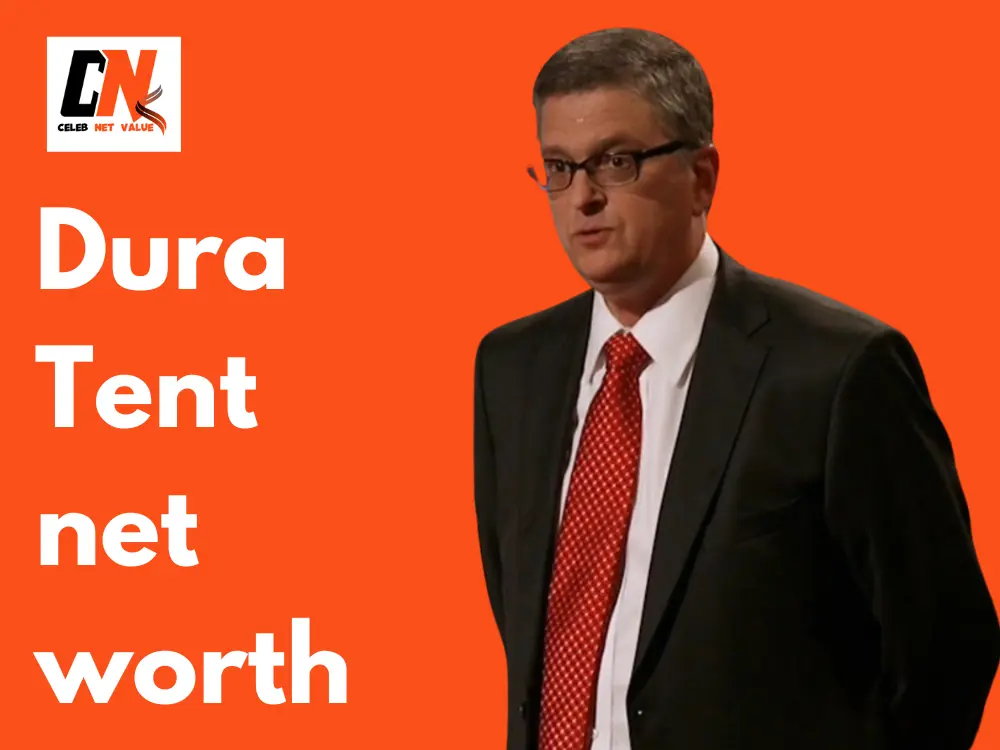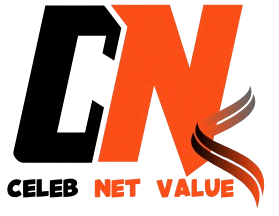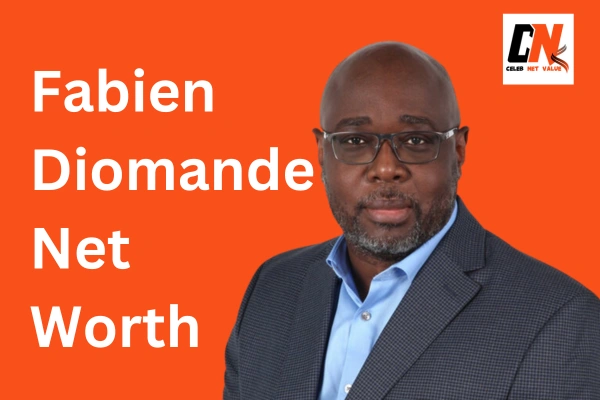
Dura Tent now rebranded as PicnicPal, is an innovative solution designed to protect food from insects during outdoor picnics and BBQs. First introduced to the public through Shark Tank in 2013 by entrepreneur Dan Rothwell, the product gained significant visibility despite not securing a deal.
Since then, PicnicPal has thrived through online and retail sales, building a loyal customer base and generating impressive revenue—Dura Tent’s net worth not only current assets but also financial strategies and investments.
This article explores Dura Tent’s journey, financial performance, and the key factors contributing to its current estimated net worth of $2 to $3 million.
Dura Tent’s net worth
As of 2024, the estimated annual revenue for Dura Tent was just under $3 million. While this number is impressive for a relatively niche product, it’s important to understand that a company’s net worth involves more than just annual sales figures. Dura Tent’s net worth offers a snapshot of how effectively he has managed wealth and resources.
Key Financial Factors
- Revenue Generation: With stable annual revenue approaching $3 million, Dura Tent is performing well in its market segment.
- Assets and Liabilities: Given its small size, Dura Tent likely operates with relatively low overhead costs, which contributes to its profitability.
- Brand Value: The rebranding to PicnicPal has enhanced the product’s marketability, increasing its long-term value.
Here is a table that provides you with complete net worth breakdown information:
| Year | Estimated Net Worth ($) | Annual Revenue ($) | Yearly Progress ($) | Growth Rate (%) |
| 2019 | 1,000,000 | 600,000 | – | – |
| 2020 | 1,200,000 | 700,000 | 100,000 | 16.67 |
| 2021 | 1,500,000 | 800,000 | 300,000 | 25 |
| 2022 | 2,000,000 | 900,000 | 500,000 | 33.33 |
| 2023 | 2,500,000 | 1,000,000 | 500,000 | 25 |
| 2024 | 3,000,000 | 1,200,000 | 500,000 | 20 |
Considering the business’s steady revenue and low operating costs, it is reasonable to estimate that Dura Tent’s current net worth is in the range of $2 to $3 million. This estimate factors in both the company’s annual sales and the value of the brand itself.
How Dura Tent Makes Money?
Dura Tent’s revenue comes primarily from direct sales through its website and popular e-commerce platforms like Amazon. It is also available through certain retailers in North America, where outdoor gear is in demand. By focusing on solving a specific problem for picnic-goers, the company carved out a niche market.
Revenue Streams
- Online Sales: Through platforms like Amazon, the company reaches a broad audience, with customers appreciating the convenience of ordering online.
- Retail Partnerships: Dura Tent has partnered with various outdoor equipment stores across the U.S., further broadening its reach.
- Seasonal Demand: The product sees peak sales during warmer months when outdoor activities like picnics and BBQs are most popular.
Rothwell has managed to maintain consistent demand for his product, ensuring the business remains productive and profitable. With nearly $1 million in annual revenue as of 2022, Dura Tent has become a sustainable business without the need for outside investors.
What Happened on the Show?
In Shark Tank Season 4, Dan Rothwell presented his product Dura Tent to a panel of investors, seeking $50,000 for 30% of his company. The product, a small, portable tent designed to cover food during outdoor events, was meant to protect picnic spreads from insects.
Despite selling over 50,000 units, Rothwell faced some skepticism from the sharks, particularly regarding his financial projections and product calculations. Kevin O’Leary, one of the sharks, made a lowball offer that would not have involved any equity, and Rothwell ultimately decided to walk away from the deal.
Lessons from Shark Tank
- Lori Greiner suggested changing the product name, as “Dura Tent” didn’t resonate with its purpose.
- The sharks were divided about the long-term scalability of the product, but they did acknowledge the simplicity and usefulness of the concept.
Despite not landing a deal, Rothwell took the feedback positively, and his product began to flourish after the show.
Post-Shark Tank Rebranding
One of the key takeaways from Rothwell’s Shark Tank experience was the advice to rebrand the product. Rothwell embraced Lori Greiner’s suggestion, changing the product name from “Dura Tent” to “PicnicPal.”
This name change helped align the brand with its target market—outdoor enthusiasts and families who enjoy picnics and BBQs but struggle with keeping food bug-free.
Why the Name Change Was Crucial?
- The original name, Dura Tent, sounded more industrial and didn’t immediately communicate the product’s primary function.
- “PicnicPal” is friendlier, more descriptive, and immediately signals the product’s purpose: a companion for picnics.
The rebranding also improved the product’s marketability, leading to increased sales on platforms like Amazon, As Seen on TV, and other online retailers. Despite the name change, the Dura Tent branding continues to be recognized, especially by early adopters.
Product Performance and Customer Reception
Since its rebranding and the additional visibility from Shark Tank, PicnicPal (formerly Dura Tent) has maintained positive reviews from customers.
The product’s simplicity, ease of use, and effectiveness in protecting food from insects make it a popular choice among outdoor enthusiasts. The two available models, PicnicPal Plus and PicnicPal XL, offer options for different group sizes.
Customer Feedback Highlights
- Ease of Use: Users appreciate how simple it is to set up and fold the tent for transport.
- Durability: The product has received praise for its high-quality materials, ensuring it can be reused for multiple outings.
- Effectiveness: Many customers note that the tent is highly effective at keeping bugs away from food, enhancing outdoor dining experiences.
With such positive reception, the product has developed a loyal customer base, which has contributed to its steady sales.
Market Challenges and Opportunities
While Dura Tent has found success, the brand still faces challenges typical of niche products. One of the key issues is competition, both from direct competitors and alternative solutions for keeping food insect-free during picnics.
Challenges
- Seasonal Nature of Sales: Sales are likely to fluctuate depending on the season, with peak periods during spring and summer and slower sales during fall and winter.
- Competition from Alternative Products: Some customers opt for simpler solutions like plastic wrap or mesh covers, which could divert sales away from Dura Tent.
Opportunities
- Expanding the Product Line: By introducing new sizes or complementary products (e.g., insect-repelling devices), the company could increase its customer base.
- International Markets: With outdoor dining becoming more popular worldwide, expanding sales to international markets represents a significant growth opportunity.
The Future of Dura Tent
Looking ahead, Dura Tent has several avenues for growth. Rothwell can leverage his product’s positive reputation and established customer base to expand into new markets or diversify his product line.
Potential Growth Areas
- Product Innovation: Introducing new features, such as UV protection or eco-friendly materials, could attract more environmentally conscious consumers.
- Global Expansion: By tapping into international markets where outdoor dining is popular, the company could significantly increase its sales volume.
- Collaborations and Partnerships: Partnering with larger outdoor brands could help Dura Tent reach new audiences and grow its distribution network.
Conclusion
Dura Tent’s journey, from its humble beginnings on Shark Tank to its current status as a profitable business, is a testament to the power of innovation and persistence. Despite not securing a deal with the sharks, Dan Rothwell successfully grew his business by listening to feedback, rebranding the product, and focusing on solving a common problem for outdoor enthusiasts.
With steady revenue, a loyal customer base, and opportunities for future growth, Dura Tent is well-positioned for continued success in the outdoor market. Its current net worth, estimated between $2 million and $3 million, and reflects the product’s market value and the brand’s potential for expansion. Analyzing Dura Tent’s net worth provides a comprehensive view of his financial journey and achievements.
FAQs
- What is Dura Tent (PicnicPal)? Dura Tent, now known as PicnicPal, is a portable tent designed to cover food during outdoor events, protecting it from insects and debris. It’s perfect for picnics, BBQs, and other outdoor gatherings.
- How did Dura Tent gain popularity? The product gained significant attention after its appearance on Shark Tank in 2013, where the founder, Dan Rothwell, showcased its unique solution for keeping food bug-free. Despite not securing a deal, the exposure helped boost its sales.
- What is the current estimated net worth of Dura Tent? As of now, Dura Tent’s estimated net worth ranges from $2 million to $3 million. This valuation reflects the company’s stable revenue and increased brand recognition after rebranding to PicnicPal.
- Where can I purchase PicnicPal? PicnicPal can be purchased directly through its official website and major e-commerce platforms like Amazon. It is also available in select outdoor equipment stores across North America.
- Are there different models of PicnicPal? Yes, PicnicPal offers various models, including PicnicPal Plus and PicnicPal XL. These options cater to different group sizes and outdoor dining needs, ensuring that everyone can find the right fit for their picnics.



кредит под залог грузового авто
https://www.teknoxglobalconcept.com/employer/avtolombard-pid-zalog-pts477/
кредит под птс с плохой кредитной историей
займ под залог авто
http://minority2hire.com/employer/avtolombard-zalog-invest3780/
залог под птс авто
взять деньги под птс
https://c3tservices.ca/companies/cvgods5122/
кредиты под залог машины с правом вождения
кредит наличными под залог автомобиля
https://www.cbl.health/employer/jobteck3563/
автоломбард залог
деньги под залог автомобиля
https://mhealth-consulting.eu/employer/mahadjobs5668/
кредит под птс автомобиля
автоломбард
https://malidiaspora.org/employer/iway5227/
кредит под птс новосибирск
интернет по адресу
krasnodar-domashnij-internet003.ru
провайдеры по адресу дома
домашний интернет омск
omsk-domashnij-internet003.ru
домашний интернет в омске
узнать интернет по адресу
samara-domashnij-internet003.ru
интернет провайдеры по адресу самара
провайдер по адресу новосибирск
novosibirsk-domashnij-internet001.ru
узнать интернет по адресу
проверить провайдеров по адресу самара
samara-domashnij-internet003.ru
провайдеры в самаре по адресу проверить
узнать провайдера по адресу санкт-петербург
spb-domashnij-internet001.ru
подключить интернет санкт-петербург